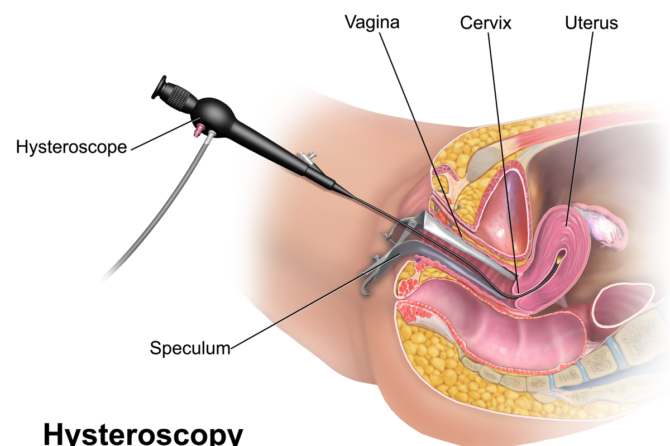
A hysteroscopy is an examination of the inside of the womb (uterus). This is done using a hysteroscope, a narrow telescope about the size of a drinking straw, which can be passed through the cervix (neck of the womb) so that the gynaecologist can see into the uterus.
A tiny video camera will be fitted over the eye piece of the hysteroscope so that the view can be seen on a video screen by the doctor and the assistant.
DIAGNOSTIC HYSTEROSCOPY
This is the use of hysteroscopy to determine the cause of a gynaecological problem. This examination may be done if uterine problems are suspected because of:
- Heavy or irregular periods
- Postmenopausal bleeding
- Infertility
- Recurrent miscarriage
- Unexplained pain
- Fibroids
Hysteroscopy may also be performed:
- To check the results of uterine surgery
- To check or remove an intrauterine contraceptive device
Risks
Diagnostic hysteroscopy is a very minor procedure and the risk of serious complication is extremely small. It should not be done if the woman is pregnant or has an infection.
OPERATIVE HYSTEROSCOPY
An increasing number of operations can be performed using the hysteroscope to view the inside of the uterine cavity. These include:
- Endoxnetrial ablation – the removal of the endometrium or the lining of the uterus
- Removal of endometrial polyps – non cancerous (benign) growths that develop in the lining of the uterus
- Removal of fibroids non cancerous (benign) growths in the uterus, within the uterine wall or on the outer surface
- Removal or division of scar tissue
- Removal of uterine septa unwanted tissue in the uterus.
How is operative hysteroscopy performed?
The procedure is similar to diagnostic hysteroscopy. A general anaesthetic is always used. A larger hysteroscope is needed so that special instruments can be passed through it, for example scissors, diathermy, laser etc.
A special fluid is needed to expand the uterine cavity and wash away any blood.
Hysteroscopic surgery may take anything from a few minutes to over an hour depending on the procedure being done.
Risks associated with operative hysteroscopy
When operations are performed through the hysteroscope, there are risks as
with any surgery. The main problems which can occur are:
- anaesthetic complications
- fluid imbalance or overload from the fluid used to distend the uterus
- damage to the uterus or organs nearby (bladder, bowel, blood vessels}, if perforation of the uterus occurs accidentally
- bleeding.








